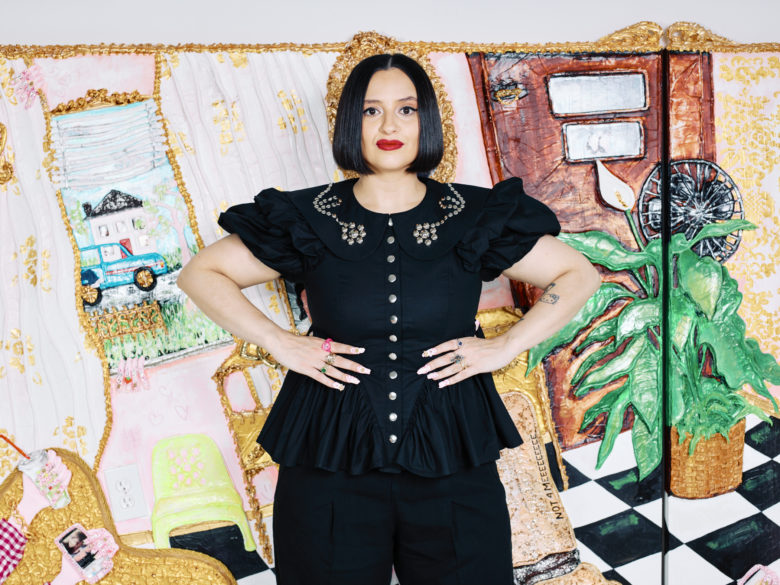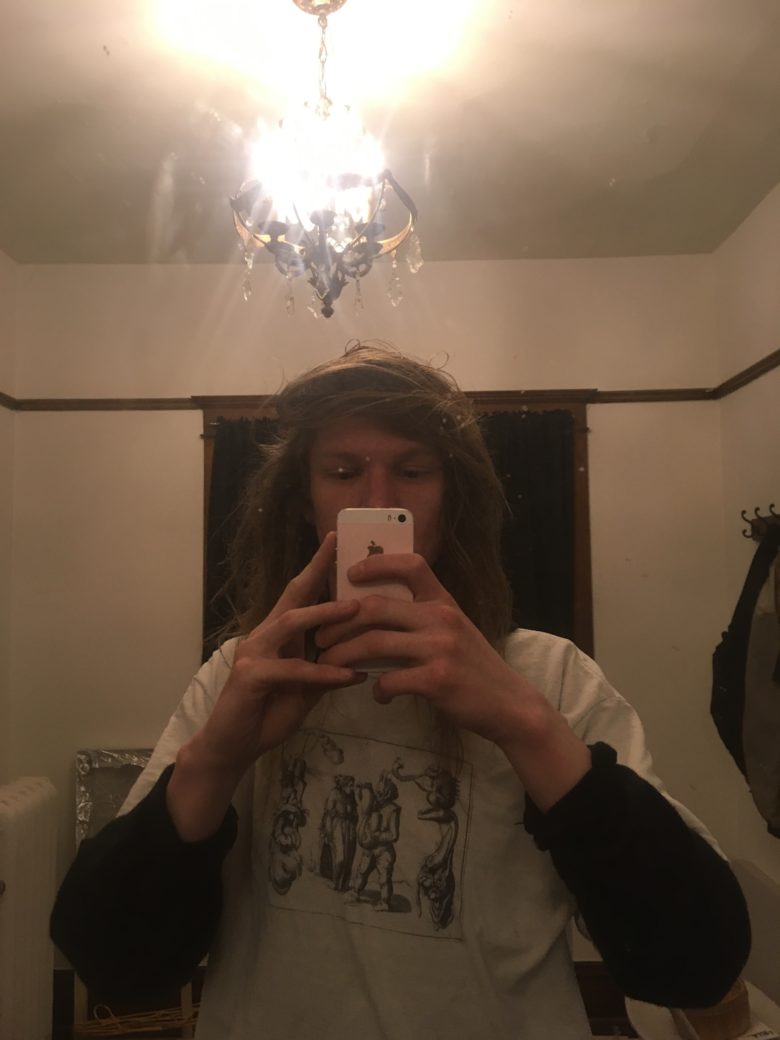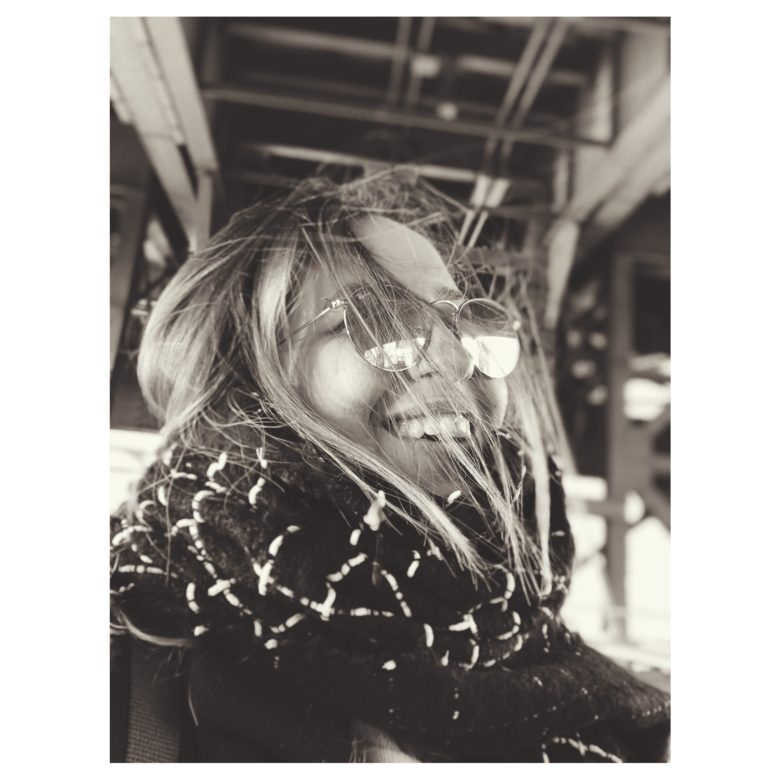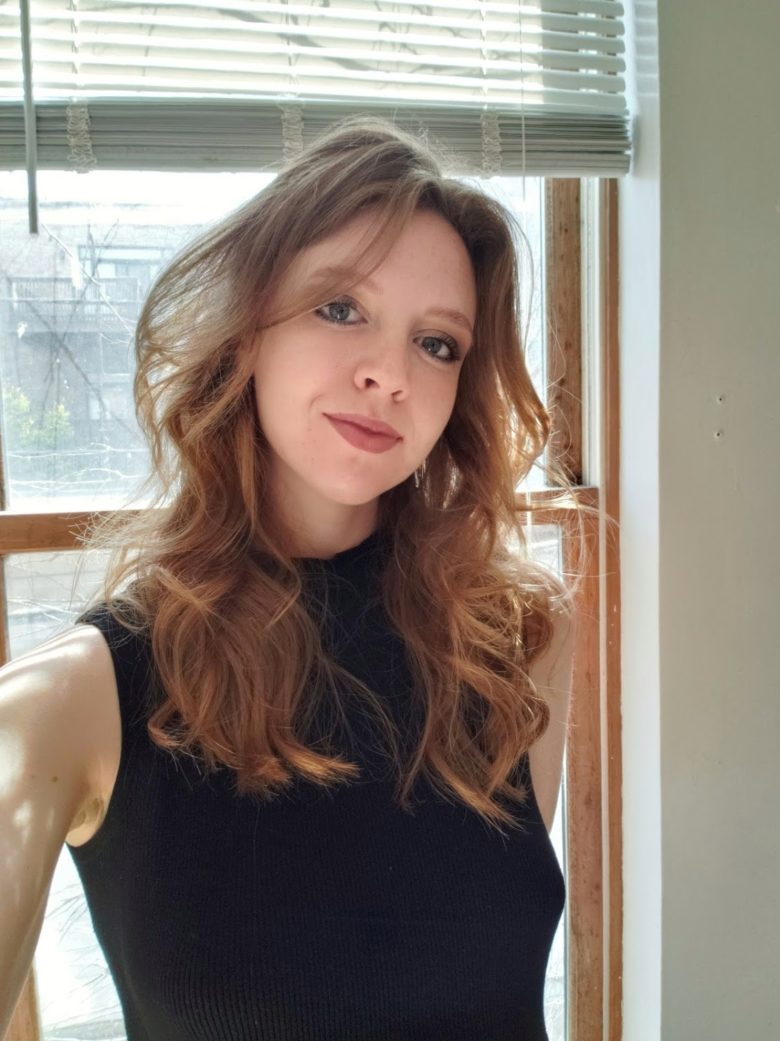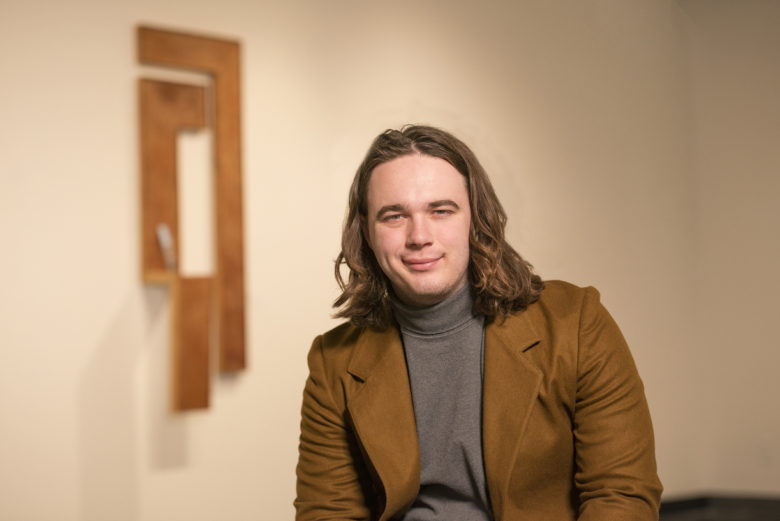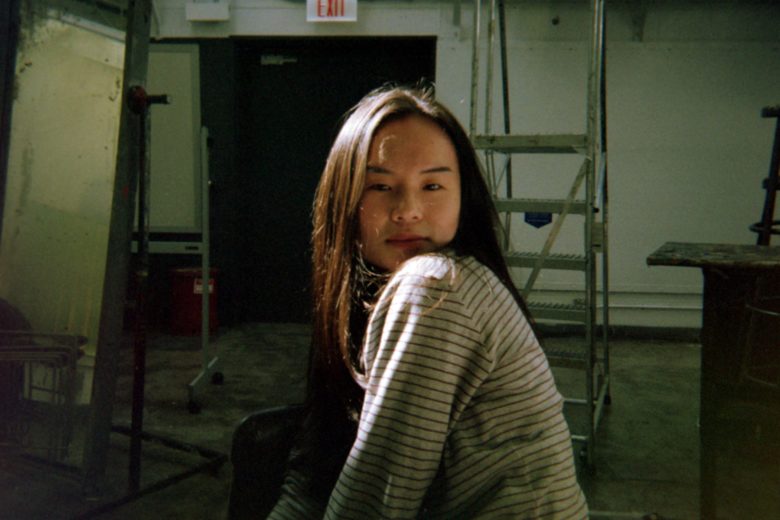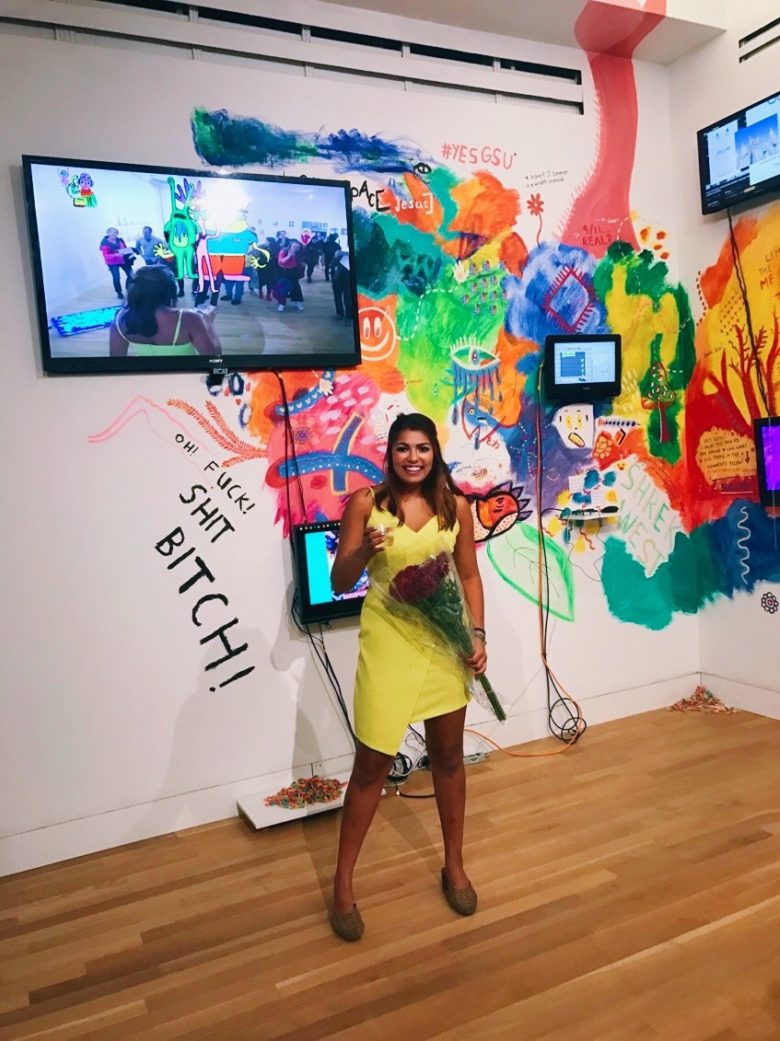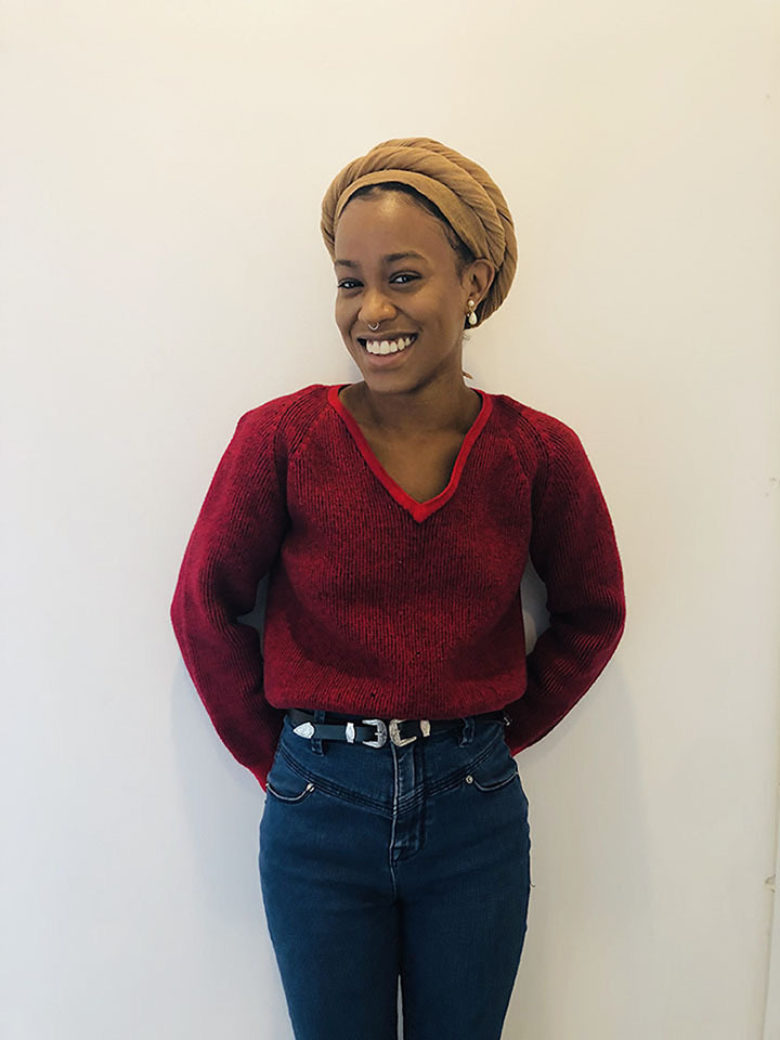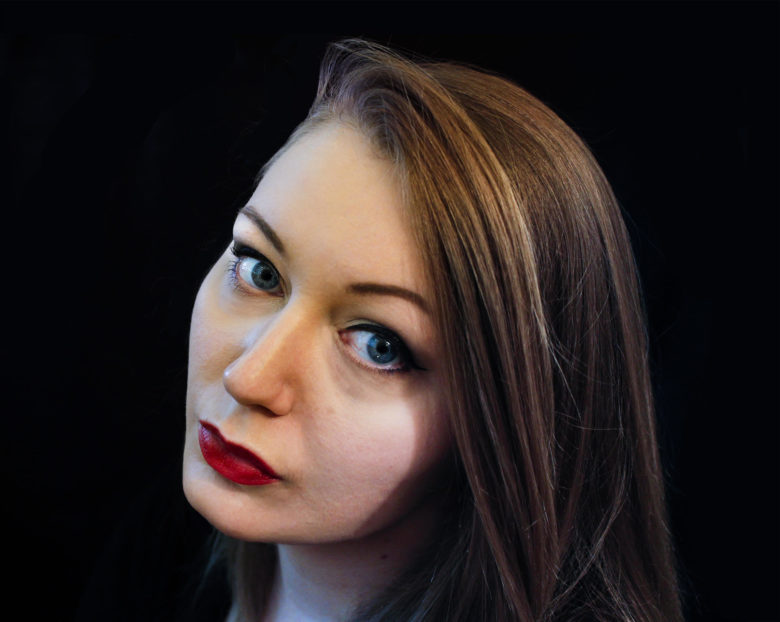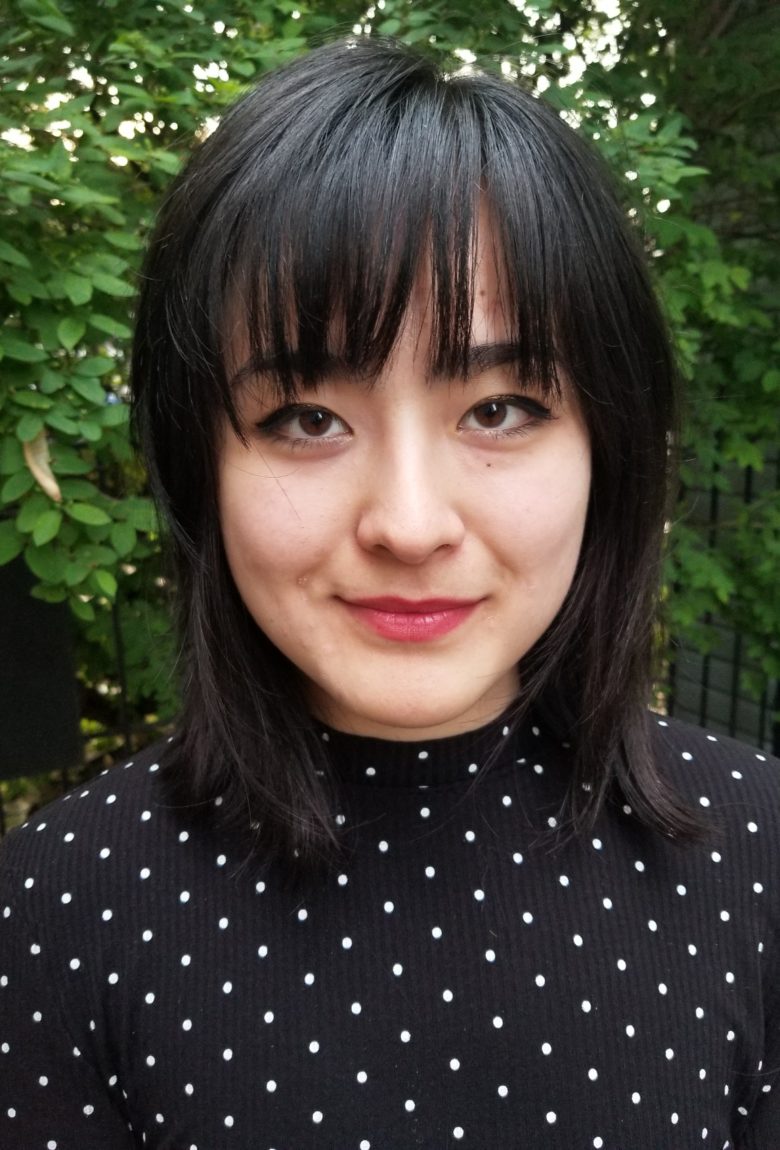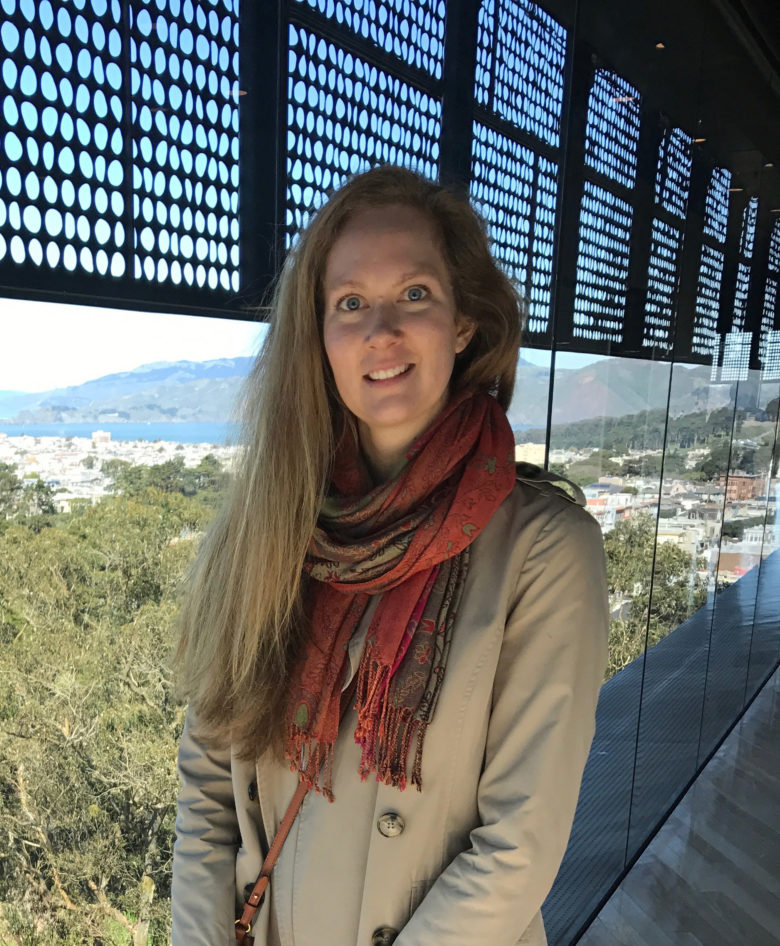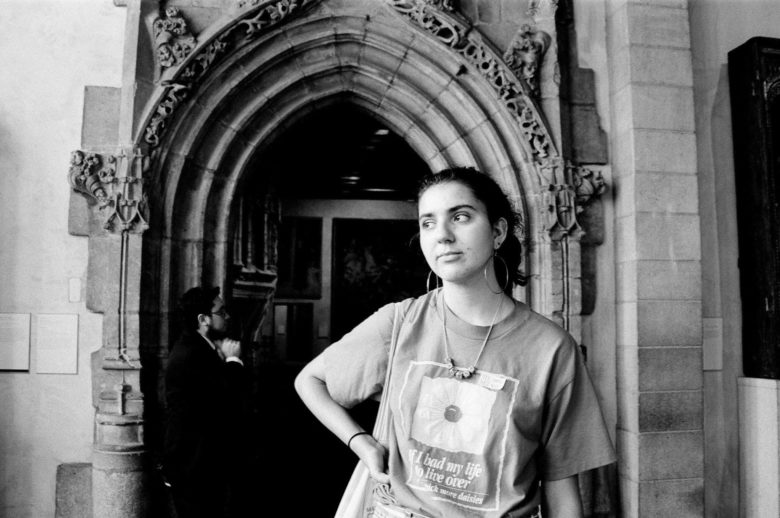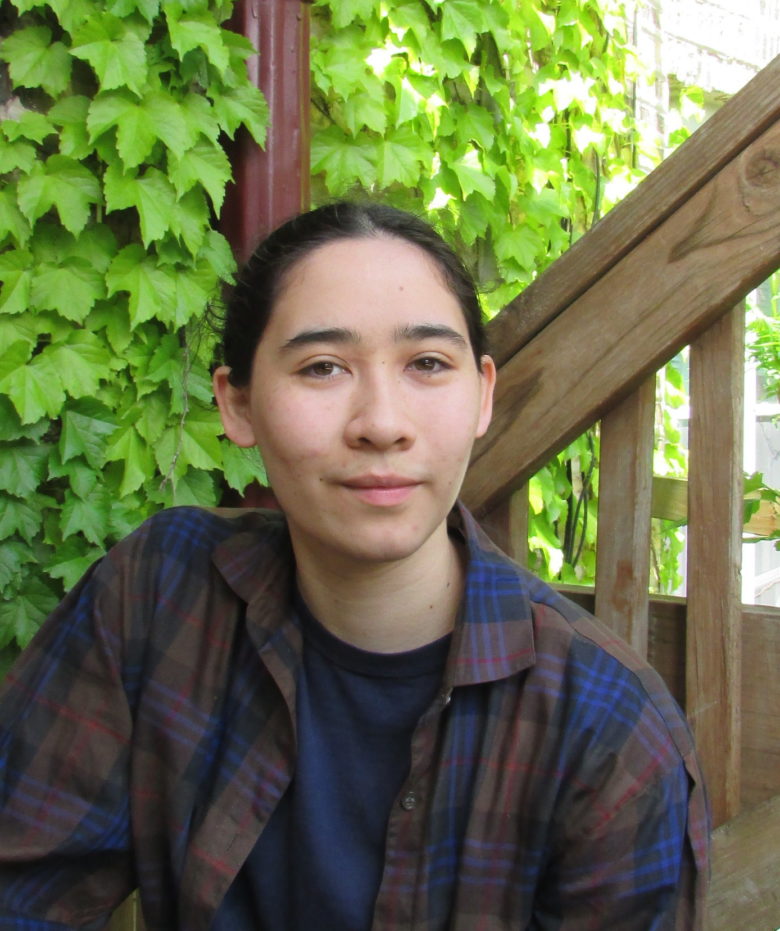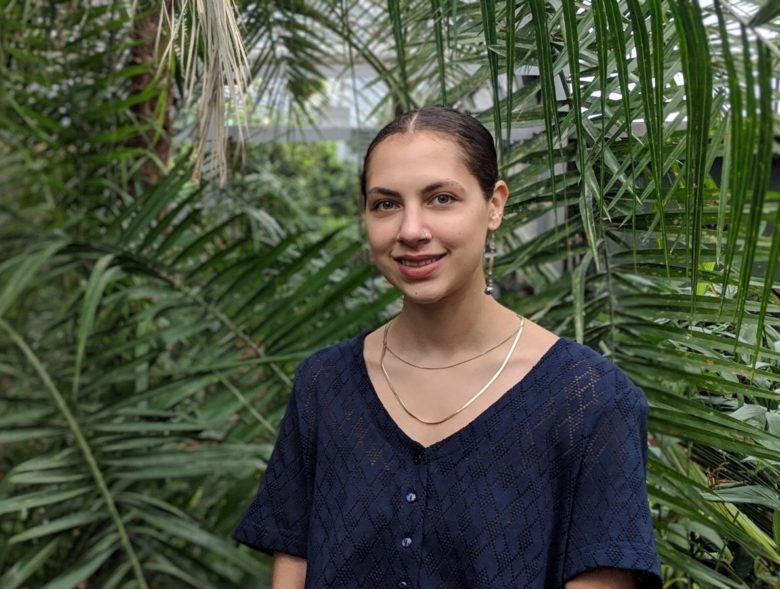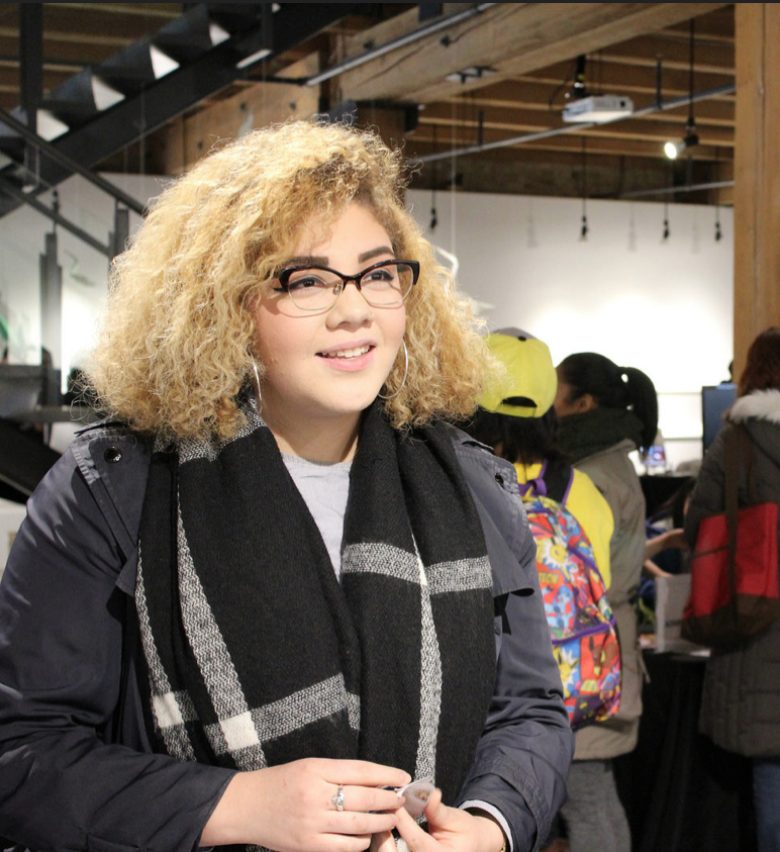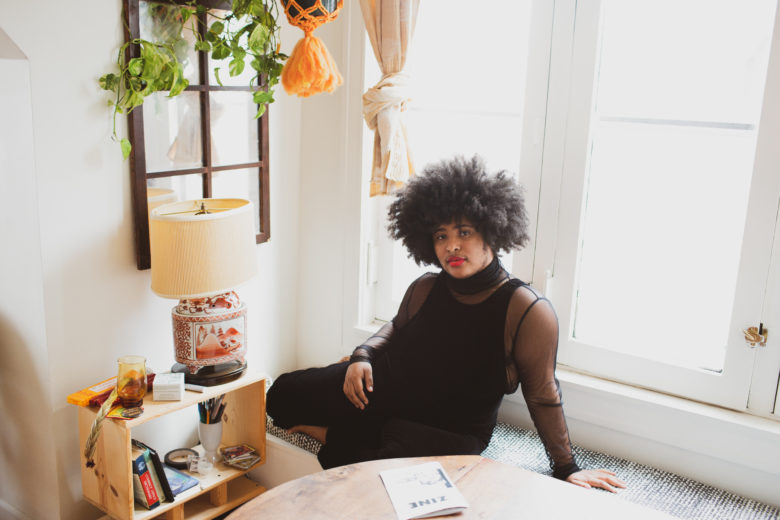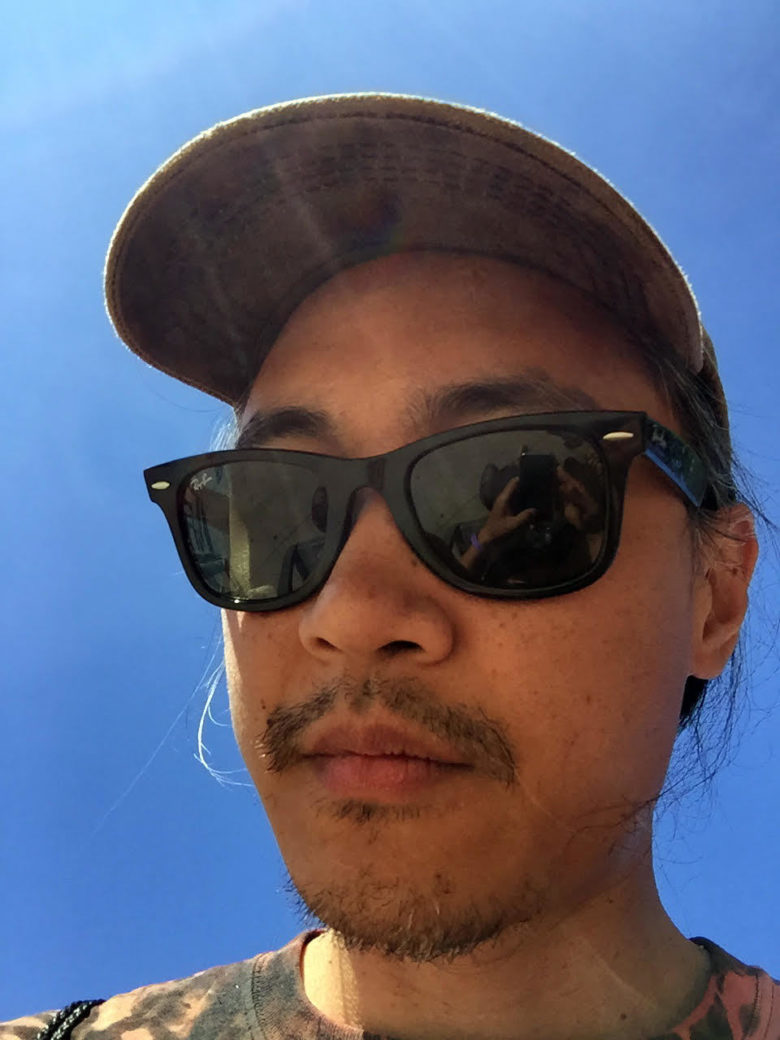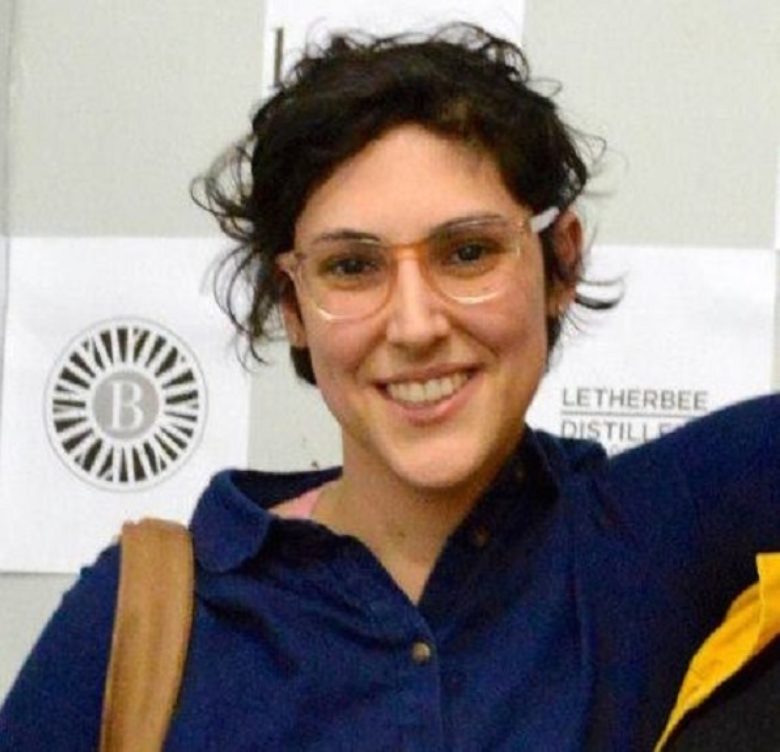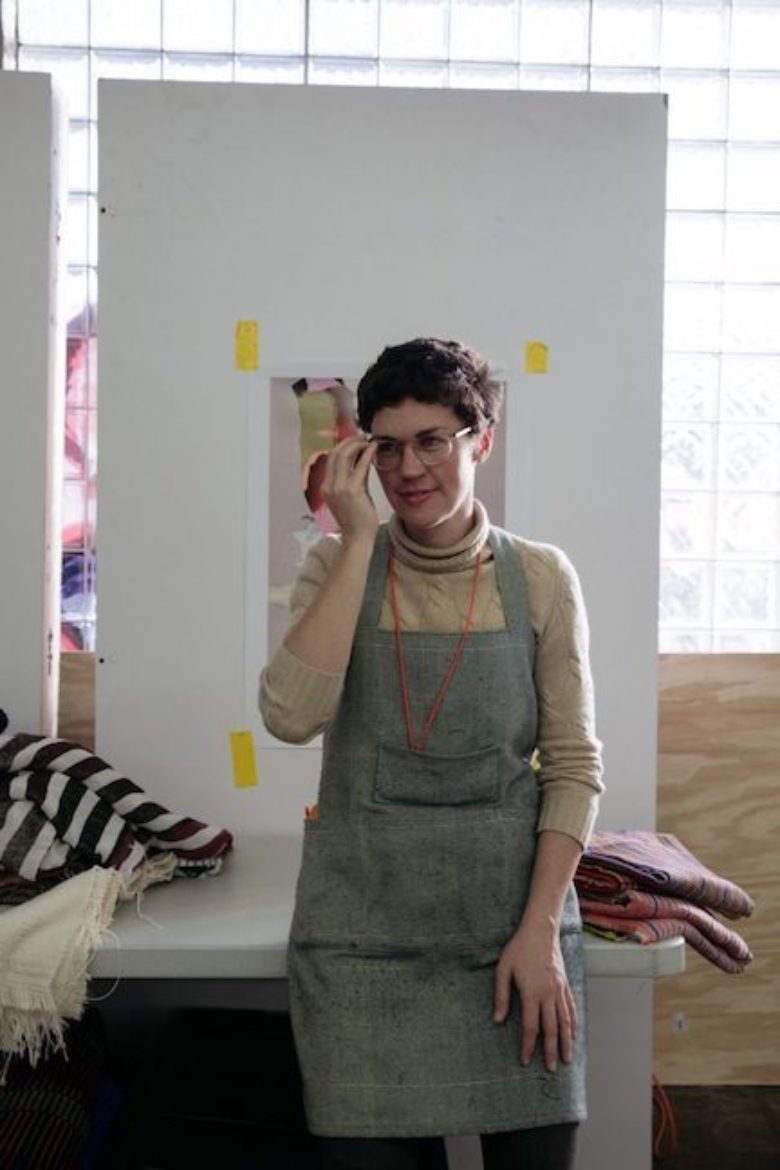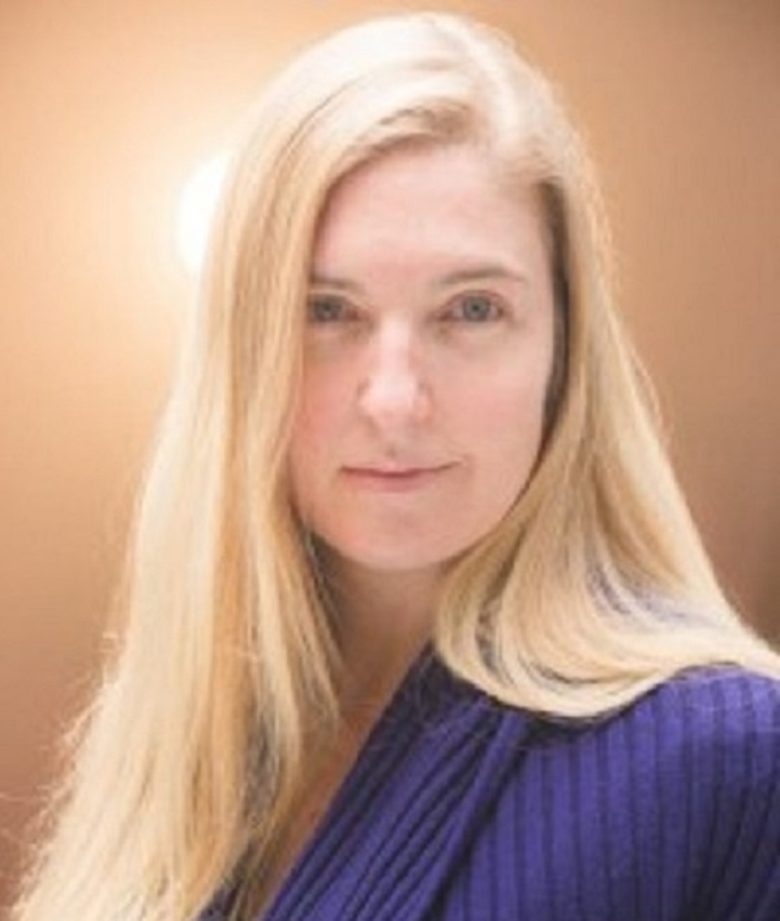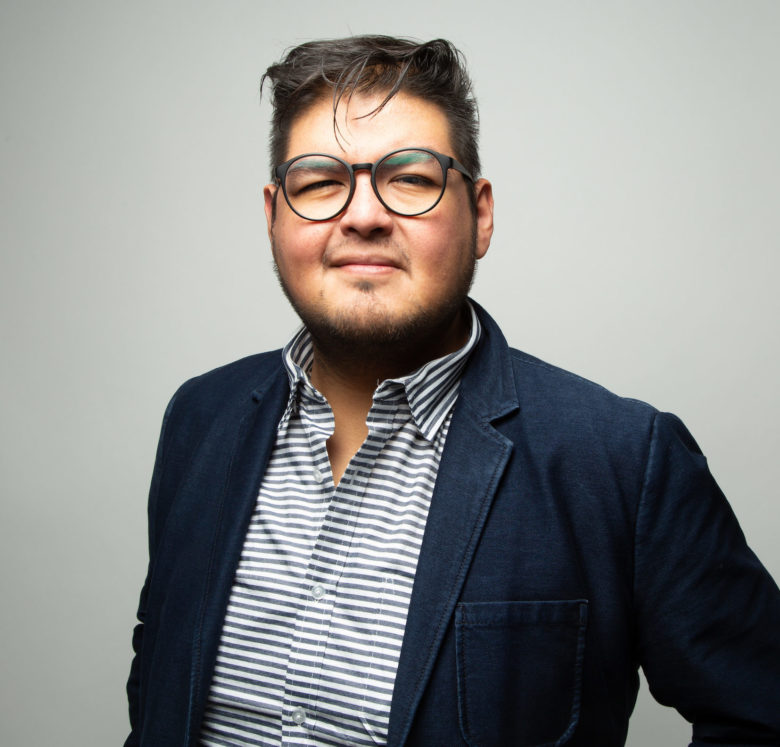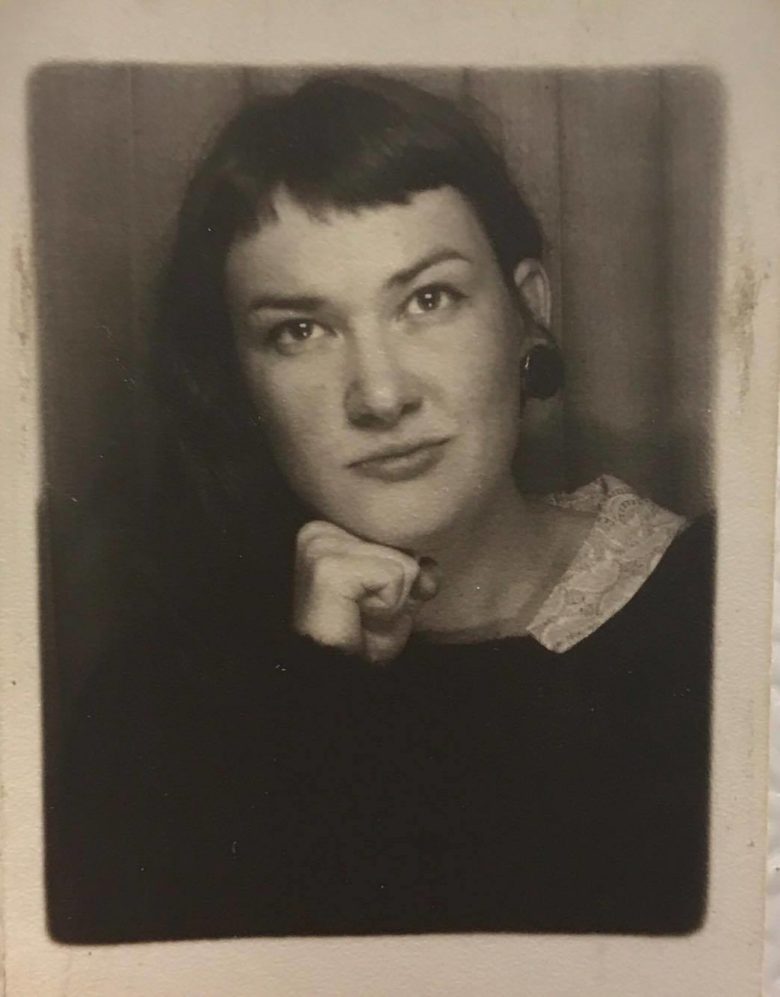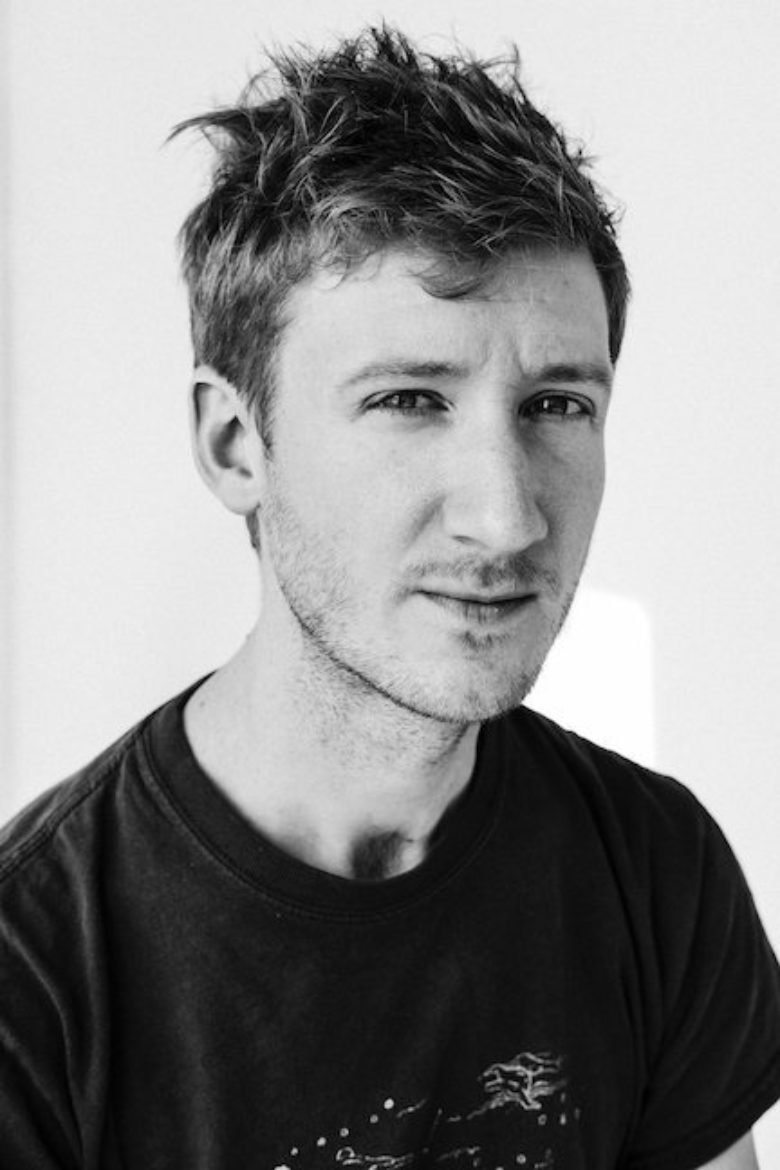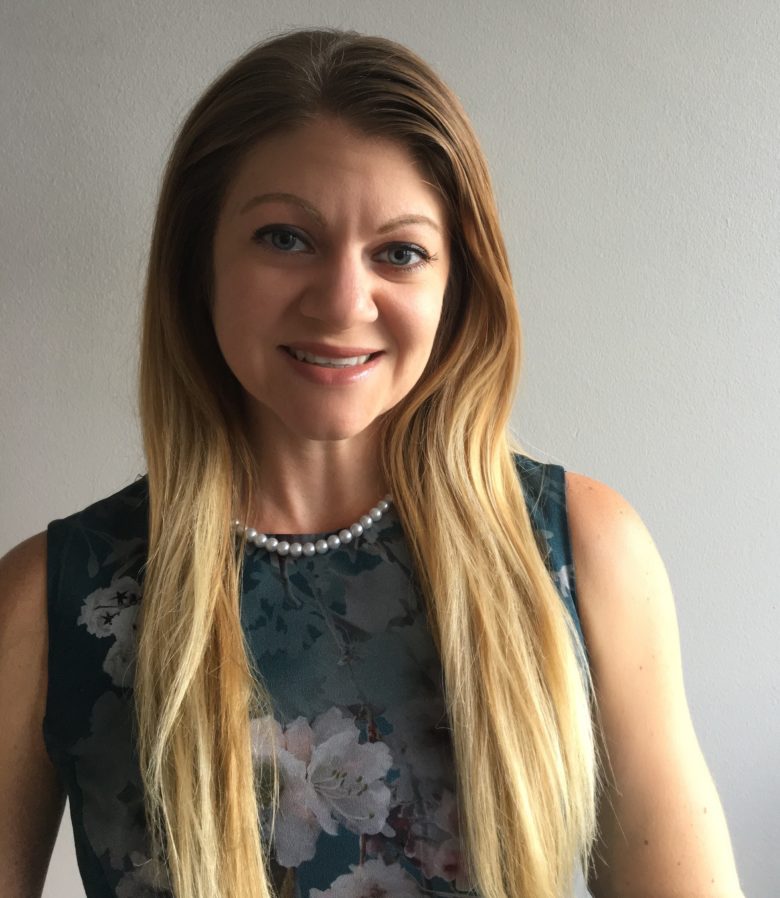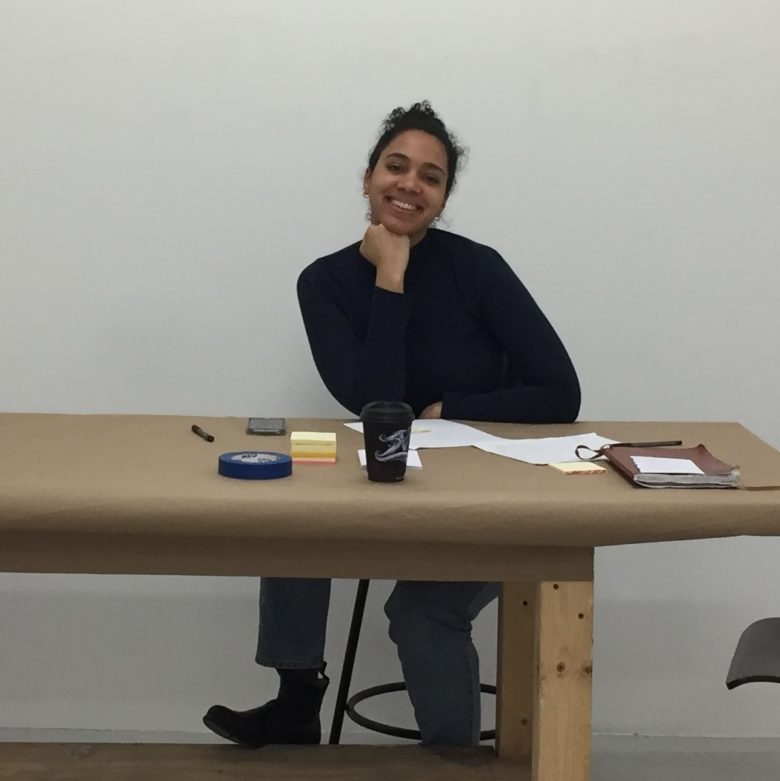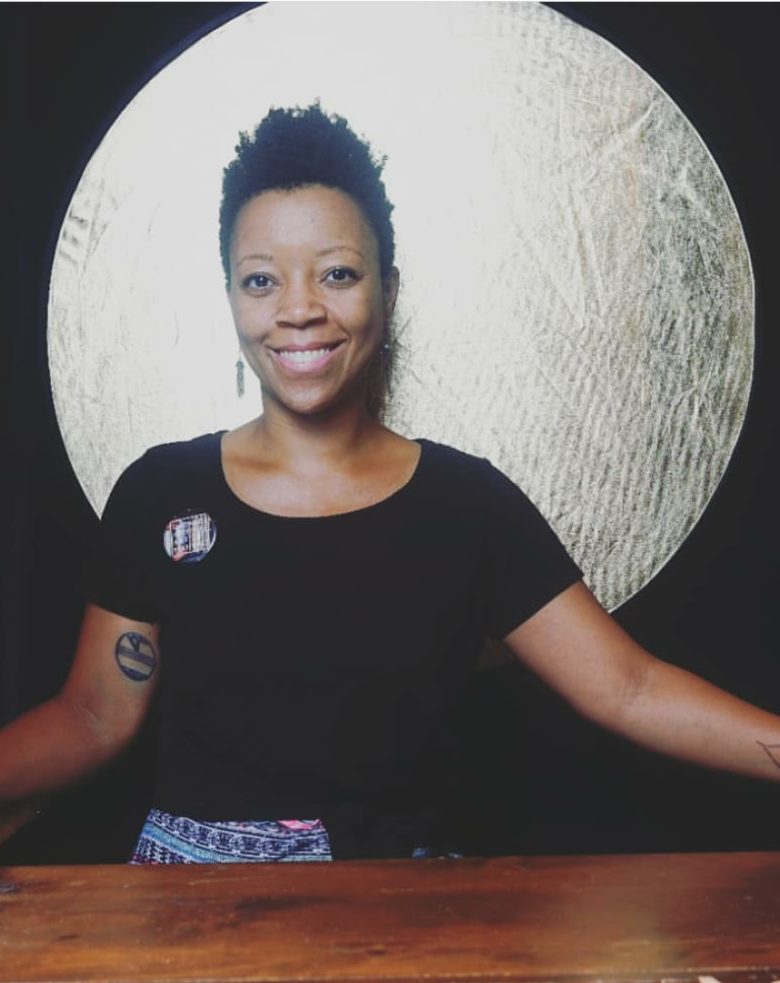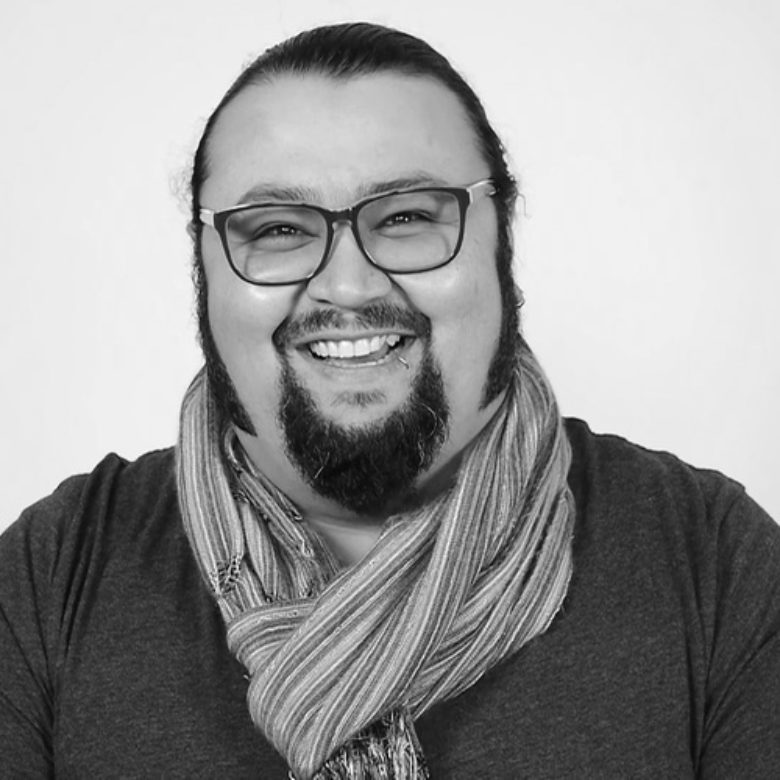Meet Artist Mentors
Luis Sahagun is a multi-disciplinary artist that confronts the palpable inescapability of race and transforms art into an act of cultural reclamation. Like DNA strings of mestizaje, his practice metaphorically represents contradiction — indian/conqueror, violence/unity, and ancient/contemporary. As a previously undocumented immigrant and former laborer, Sahagun’s art seeks to reveal the aesthetics of relocation and transgenerational trauma by utilizing building materials such as silicone, lumber, drywall, concrete, and hardware as symbols that represent working class immigrants in this country. Sahagun has exhibited at venues including the MCA, Chicago, IL; The National Museum of Mexican Art, Chicago, IL; the International Exposition of Contemporary Art (expo) Chicago, IL; amongst many others. Additionally, his work has been covered in publications such as: ArtForum, ChicagoMag, NewCity Magazine, and the Chicago Tribune. He is currently a Lecturer at The School of the Art Institute of Chicago and is a Teaching Artist for the MCA Chicago. Photo: Zakkiyyah Najeebah
Yvette Mayorga is a multidisciplinary artist based in Chicago, IL. Her works link feminized labor and the aesthetics of celebration to colonial art history and racialized oppression through the guise of using pink as a weapon of mass destruction. They flaunt a maximalist aesthetic rooted in personal narrative and familial histories to examine the Latinx experience in the US. Mimicking the confectionary labors performed by bakery workers, Mayorga uses piping bags to thickly apply her signature bubblegum pink acrylics to varying sized canvases.
Mayorga (b.1991) holds a BFA in Painting and Drawing with a minor in Anthropology from the University of Illinois at Urbana-Champaign and an MFA in Fiber and Material Studies from the School of the Art Institute of Chicago. Notable solo exhibitions include The Golden Cage at the Museo de Arte de Zapopan, Guadalajara, MX (2024); Dreaming of You at The Aldrich Contemporary Art Museum, Ridgefield, CT (2023-24); and What a Time to Be at The Momentary, Crystal Bridges Museum of American Art, Bentonville, AR (2023). Her work has been exhibited nationally and internationally in group exhibitions at the Museum of Arts and Design, NY; Los Angeles County Museum of Art (LACMA), CA; John Michael Kohler Art Center, WI; El Museo del Barrio, NY; Museum of Fine Arts Boston, MA; DePaul Art Museum, IL; Vincent Price Art Museum, CA; The Center for Craft, NC; Museo Universitario del Chopo, Mexico City, among others.
Mayorga’s works are in the permanent collections of 21c Museum Hotels, Louisville, KY; Cerámica Suro, Guadalajara, MX; Crystal Bridges Museum of American Art, Bentonville, AR; DePaul Art Museum, Chicago, IL; El Museo del Barrio, New York, NY; John D. and Catherine T. MacArthur Foundation, Chicago, IL; Museum of Fine Arts Boston, MA; and New Mexico State University Art Museum, NM. Awards and fellowships include the Cerámica Suro Residency (2023), New Mexico Arts Artists Residency at New Mexico Art Museum (2022) and the Individual Artist Program Grant in Chicago, IL (2022) among others. She currently lives and works in Chicago, IL.
Headshot: Marzena Abrahamik
Image: LA URSUPADORA NOT 4 ME, 2025, collage, textile, glitter, lamp shade, pen, electrical outlet, hoop earrings, shoes, jeans, marker, pastel, drawer handles, lampshade, ceramic, belt, felt, pastel, clock, stickers, gold flakes, gold foil, mirror, acrylic nails, textile, nail charms, tv control, and acrylic piping on canvas, 60 x 120 in
(updated 2025)
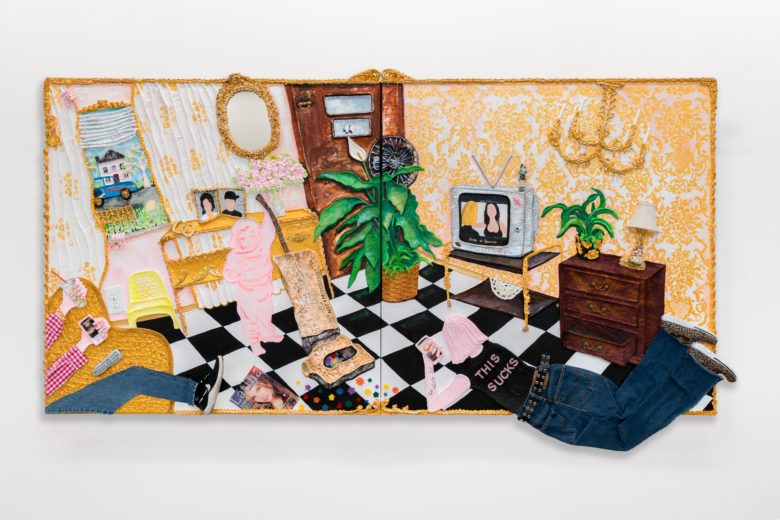
Meet Artist Residents
Aidan Hercules spent all of 2003-2013 playing the online MMORPG game World of Warcraft. He co-runs a flag pole exhibition site in Roger’s Park called North Pole (northpoleexhibitions.com) in his backyard in which every month an artist hosts a ceremony and raises a flag (or flag like thing) that they have created. He currently works in the Columbia College printmaking facility. He graduated with a BFA from Columbia College Chicago in 2019.
Alejandra Perez Baertl is an interdisciplinary artist born and raised in Lima, Peru where she started pursuing her BFA until transferring to the School of the Art Institute of Chicago (SAIC). Although her recent work has been focused on painting, her practice embraces a range of techniques including monotypes, photography, and fibers. Driven by curiosity and material experimentation, she works in constant iterations playing with rhythms as well as memories. Her work explores themes such as family relationships, expectations, and the way in which we navigate our own landscapes. Strongly influenced by her environment, she is in constant search for new experiences. In 2018 she was awarded a scholarship from SAIC for a study and research trip to Japan. She is also the founder of the Advanced Painting Open studios at SAIC. Perez Baertl’s work has been published in The Princeton University Undergraduate Journal of Art: Kunstkammer, as well as in M.A.L.A. an instagram platform aiming to support and showcase work of Latina women around the world.
Currently residing in Chicago, Illinois, Ally Fouts is a mixed media artist exploring notions of composition with materials including melamine board, fishing line, video, found objects, and photographs. There is a specific visual sense infiltrated throughout her diverse use of media that reveals an emphasis on form and structure, both seen and implied. Ally works to explore the conversations that occur across media with a special emphasis on sculpture and photography. Her latest investigations explore the concept of creating sculptures that only exist when photographically processed. Using investigative darkroom techniques, Ally employs photograms and superimposed image-making, using particle board, nails, and fishing line sculptures as the instrumentation. These sculptures, made of traditional tradesmen media, challenge the material that usually constructs a respected sculpture. Also challenging the line that separates sculpture and carpentry, Ally relies on the material she grew up surrounded by in her father's garage as the primary media used in the sculptures. The resulting images derived from these "instruments" highlight these materials and create a sophisticated and novel perspective of them.
Originally from Muskegon, Michigan, Ari Norris is a midwest based artist working in the field of sculpture. Norris received his BFA from Northern Illinois University in 2019, and has exhibited recently in Chicago at David Salkin Creative, Baby Blue Gallery, the 75th Rockford Midwestern Biennial in Rockford, Illinois, the Midwest Sculpture Exhibition in Indiana, and other locations across Michigan, New York, Florida, and Texas. Upcoming exhibitions include the 5th International Exhibition on Conceptual Art at Czong Institute for Contemporary Art (CICA) Museum, Gyeonggi-do, South Korea, and the Plant Show at Ground Level Platform, Chicago.
Caroline makes drawings, photographs, and objects that investigate the space between what is objectively present and what feels emotionally present. Drawing from observation and personal experience, she tries to reframe the everyday. Her work references structures like windows, screens, and frames, as well as places of transition, like airports or her childhood home. By doing so, she tries to show how the familiar can become wonderful and the wonderful, familiar. Caroline has recently shown at Roman Susan, SITE Galleries, and Zhou B Art Center. She recently received her BFA from the School of the Art Institute of Chicago in the Advanced Painting program. Caroline is also part of the collective Quilt Buddies, as well as the publishing collective West Coast Friendship Club.
My artwork focuses on the exploration and relationship between painterly and tactile forms. Questions regarding how the use of varying surfaces to host visual imagery is explored repeatedly within my work. How does the form of the support surface affect the visual dialogue created by the paint that covers it? How does the paint that covers my sculptures affect the reading of the sculpture? These questions are integral for understanding how the forms that embody the support surface directly impact the visual narrative and reading of the graphic forms. Conversely, how the visual imagery affects the form of the support surface. Thus, the relationship between the visual and tactile forms within a work of art is vital for the creation and interpretation of its meaning and should be both equally considered. I present these questions and ideas through my mixed media practices involving traditional mediums such as oil painting on canvas as well as new media installations using geometric sculptures and digital video projection mapping. My recent oil paintings incorporate low relief sculpture, providing me a support surface that juxtaposes alternate images with the painted imagery on top. Moreover, projection mapping has given me the ability to manipulate the perception of a surface’s structural composition entirely, by utilizing the capabilities of live video imagery and powerful projectors. All in all, not only do I create works that are both defined, rigid, and geometric, as well as forgiving, lively, and evocative, but through them invoke the importance of the surface just as much as the image presented on them.
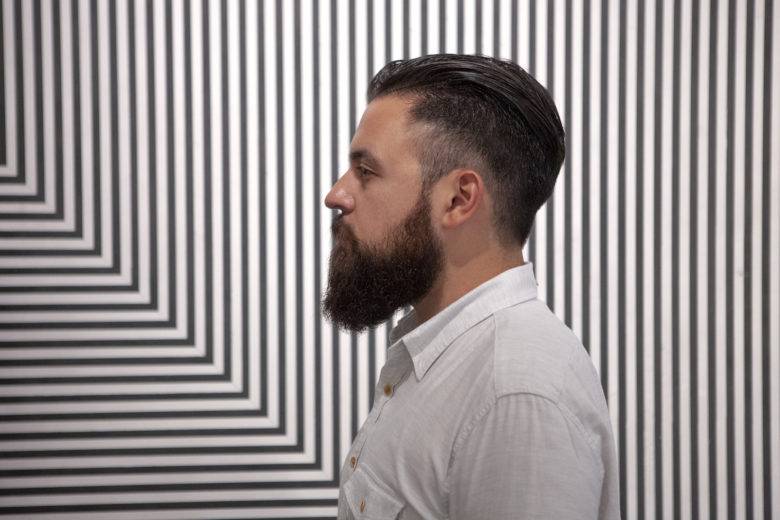
We are shaped by memory. It informs our decisions, forms our personalities, and grounds us in specific histories. But what happens when we become strangers to our own memories? Whether through avoidance or through the distortion that occurs when a memory bounces too many times in the echo chamber of our minds, we can become alien to our own pasts. However disconnected we may feel from this past, it is nearly impossible to escape how it colors and shapes our present.
My practice unearths a traumatic past which has been buried underneath a decade of Post Traumatic Stress Disorder. My reflection is spurred by neglected photographs on external drives and the military objects from my service which still surround me. By opening images in Word programs, I insert stories and recollections which the computer cannot parse and instead produces digital glitches in place of my marines, events, or fears I put into them. The digital artifacts and image corruptions provide inadvertent censorship which enables me to share deeply embedded scars. I am interested in the transformation of memory through time and the transformation of a digital image through the insertion of memory
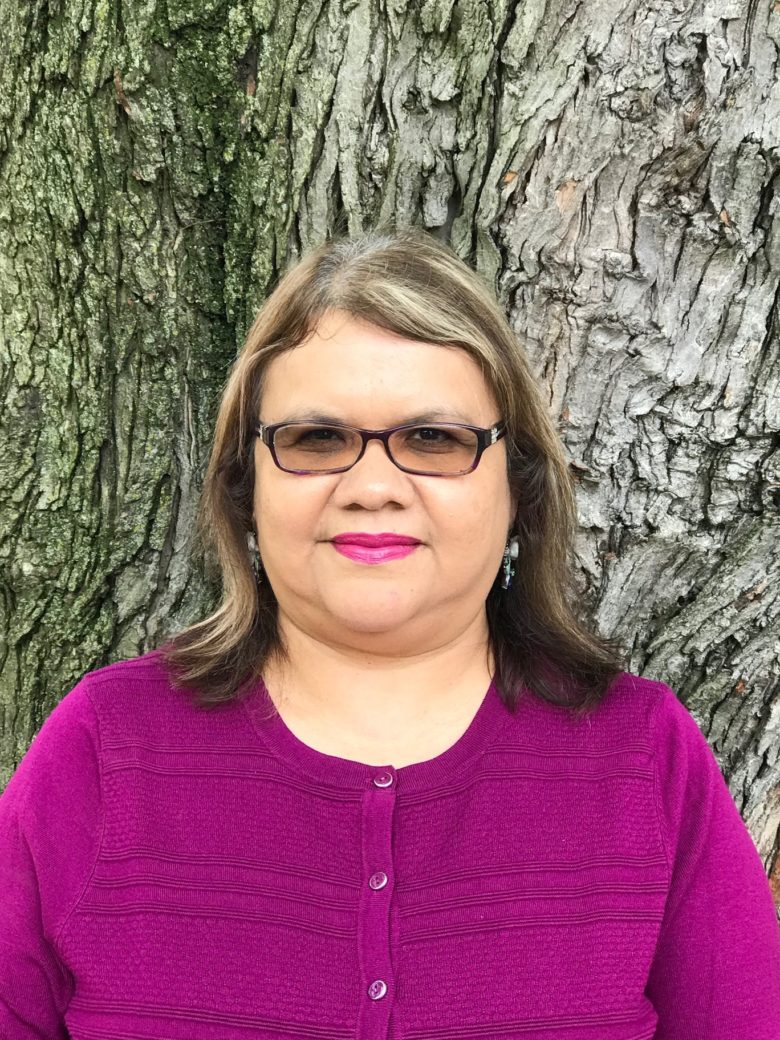
A native of Mexico, Esther Rivera is a recent graduate from Chicago State University (CSU) with a Bachelors of Art, concentration in 2D design. She received certificates of recognition from CSU for her outstanding academic achievements. Esther is a very creative person and always works with dedication to accomplish her projects. The inspiration of her art work is influenced by her cultural traditions and by nature. The intense colors in most of her compositions reflects her energy and passion for art. The creative disciplines that she has most ability for are: textiles, painting, and printmaking. Also, she has great skills to create 3D art work.
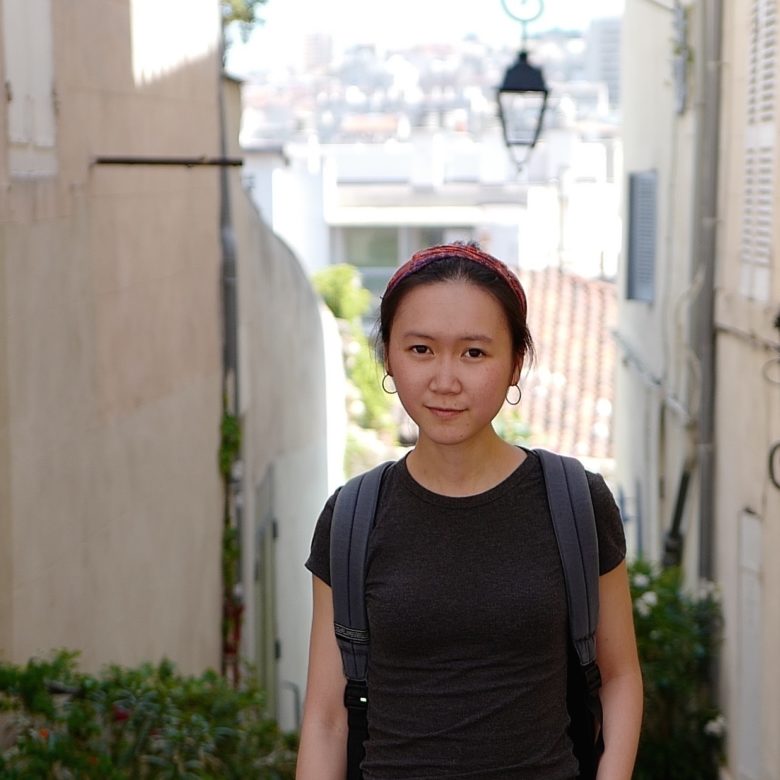
I was born and raised in a small town on the Southeastern coast of China. When I was 15, I came to the US to study by myself and eventually entered the University of Chicago to study art. Over the past four years, I have engaged with the local art scene in various ways and have come to view Chicago as my home. I have worked as a visuals editor and a reporter for a local newspaper, South Side Weekly. I am currently a curatorial intern at the smart museum of arts.
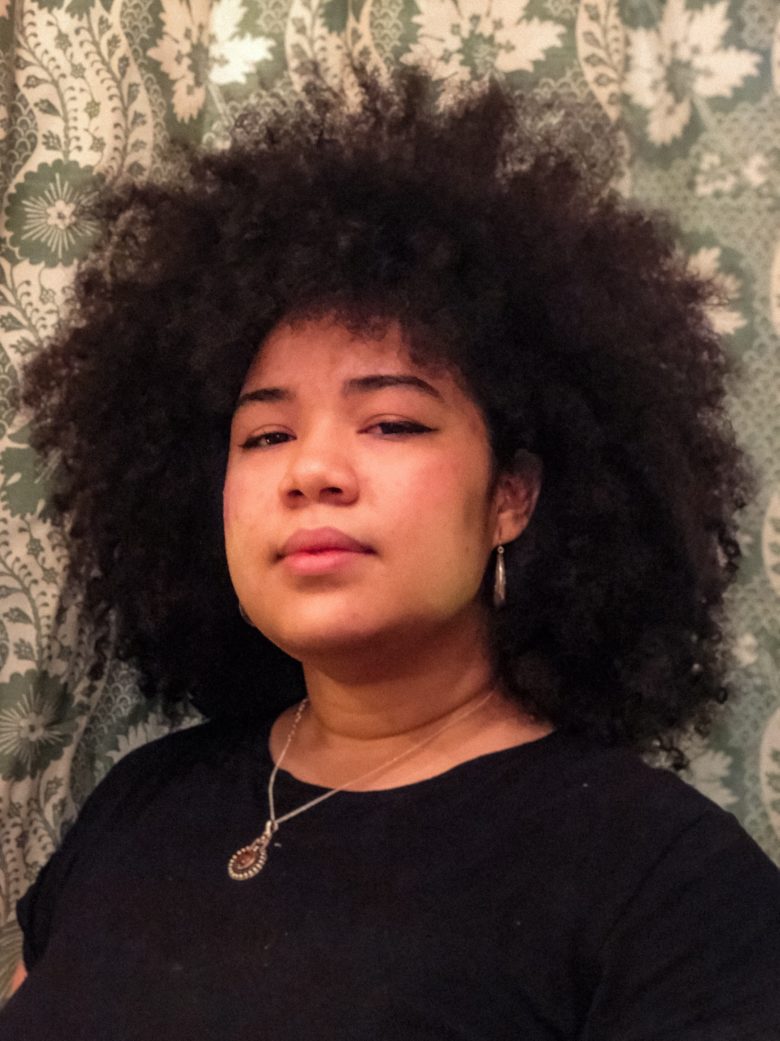
Between desire and necessity derives the need to make. As a woman who feels she has been limited by her circumstances, being multiethnic, black, queer, and financially limited, and so on; making allows me to give myself things that no one else can claim. Through expressing my ideas visually I allow myself to take up space in a society that so often ignores the voice of women and people of color. It is through my practice that I acknowledge my boundaries and limitations through the use of both hand fabrication and digital fabrication.
Juhi Gupta is a new media artist, DJ, political organizer, and designer from San Francisco, California. She graduated from the University of Chicago with honors in 2019 with a BA in public policy and visual art. Juhi makes multimedia, installation-based artwork that is politically conscious and socially relevant, engaging with the ever-changing landscape of online discourse and new technology. In 2019, she was awarded the Louis Sudler Prize in the Performing and Creative Arts for her work in for an easier recipe, sear pork shoulder, the University of Chicago Department of Visual Arts annual BA Thesis show. She was also awarded honors on her public policy thesis, which explored how communities In Chicago could democratically design their built environment. While at the University of Chicago, Juhi was an active community organizer: she served as coordinator of the progressive student organization UChicago Student Action and took on many roles with Chicago-based The People's Lobby and national network People's Action. She also spun electronic music as a DJ at community radio station WHPK 88.5fm, and wrote for South Side Weekly, a news magazine dedicated to covering issues relevant to the South Side of Chicago. In her free time, Juhi enjoys planning trips, online shopping, and making music.
Kacey Arnold is a contemporary illustrator and painter. Born in 1997 and raised in Detroit, Michigan, she currently lives in Chicago. She recently received her BFA in Painting, Drawing,and Printmaking with a minor in Cultural Anthropology at DePaul University. Her work blends art and visual ethnography while paying homage to the marginalized people of color in the Midwest. She is using found symbols and imagery to create a sort of new myth exploring the lives and experience of Black people who are in a sense, native to this area of the United States. Similar in ideology to Afrofuturists her work strives to recontextualize and explore the past and even the future as experienced by African Americans. From a young age, she was encouraged to explore the natural spaces within and around Detroit. Such explorations have had a lasting effect on the symbols, spaces, and palette used in her work.
I am a post-media artist. This is a made up term that reflects art making in an image saturated, synthetic culture. Media automatically associates art with physicality. Post-media is either nonphysical, such as the case with digital information, or it is the concept that is what's significant, rather than the substance or aesthetics. I tend toward digital art because it mirrors my place in history at the dawn of the information age. I believe that computer aided art and design is the future, as it is largely unexplored and completely infinite. That is the space where I like to create, the vast empty infinity of a 3D world, coupled with the dimension of time, anything is simulate-able. My work tends to be very theoretical, I walk the line of a physical and digital existence. I believe this will uncover something deep and meaningful about our society and reality, as we now exist simultaneously online and ‘in real life’. The way I create takes many different forms as I believe art is an exploration of self. As I evolve and synthesize new ideas, so too does my art and art making process. As the rapid development of technology progresses, new ways of art making are revealed, along with new challenges that need to be addressed.
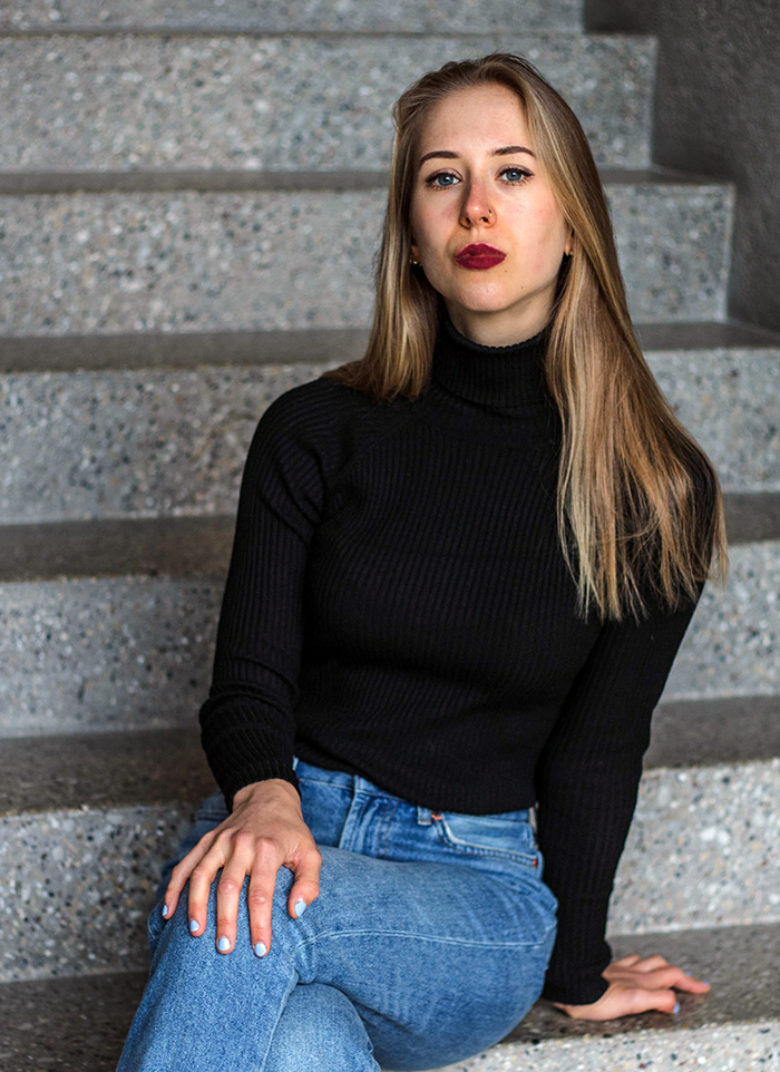
I’ve been making art my entire life, but I began to develop an artistic identity after I took a 20th century art history course during my first year of college. Much of the course focused on the evolution of the female gaze, progressing from Manet’s Olympia to Picasso’s Les Demoiselles d’ Avignon to de Kooning’s Woman I. These paintings, along with the other works I studied, portrayed nude women, staking claims on their bodies. Modernism, specifically in the Western canon, is a narrative constructed by male artists and analyzed by male critics. This infuriated me.
In response, my work is concerned with themes of the female gaze and feminine bodies. I use a variety of mediums—oil painting, collage, drawing, and sculpture—to explore the detrimental effects of objectification, while reclaiming autonomy over feminine bodies. The contradictions present in my work represent the bifurcation of the female psyche. On one hand, feminine bodies are objectified; on the other, people who present as female are alienated in our society, and are thus hyper-aware of their appearances and behaviors. I strive to portray this tension in my work while investigating new mediums, mining art history texts, and seeking out alternate perspectives.
When I was five, my dog died. She was tiny and fluffy and less than a year old.
I had some questions that were answered:
how did she die? (cancer)
what is cancer? (sickness, bad sickness)
will she come back? (no)
I had a lot of questions that weren’t answered:
what will happen to her?
why did she get cancer? will I get cancer?
what will happen to me?
I find that the greatest challenges to deriving meaning from this life are united by the unknown which characterizes the questions that I had when I was five. I make work which explores this unknown because, very often, there is no dialogue because there are no straightforward answers.
I recently received my Bachelor of Fine Arts degree with a concentration in Visual Communications from Northern Illinois University (NIU). I previously received a Bachelor of Arts degree from Columbia College Chicago. While at Columbia, I studied studio art and arts management. With this degree, I was able to study a variety of art disciplines including product design, interior architecture and graphic design, which became my favorite area of study. However, as my final semester began, changing my major to graphic design did not seem feasible. My passion for design led to my return to school and the pursuit of a degree in graphic design from NIU. As a designer, I try to step away from the computer as much as possible. One of my favorite ways to do this is by creating hand-generated typography and incorporating hand-painted elements into my designs. When not creating, you can find me baking, exploring the great outdoors or tending to my many houseplants.
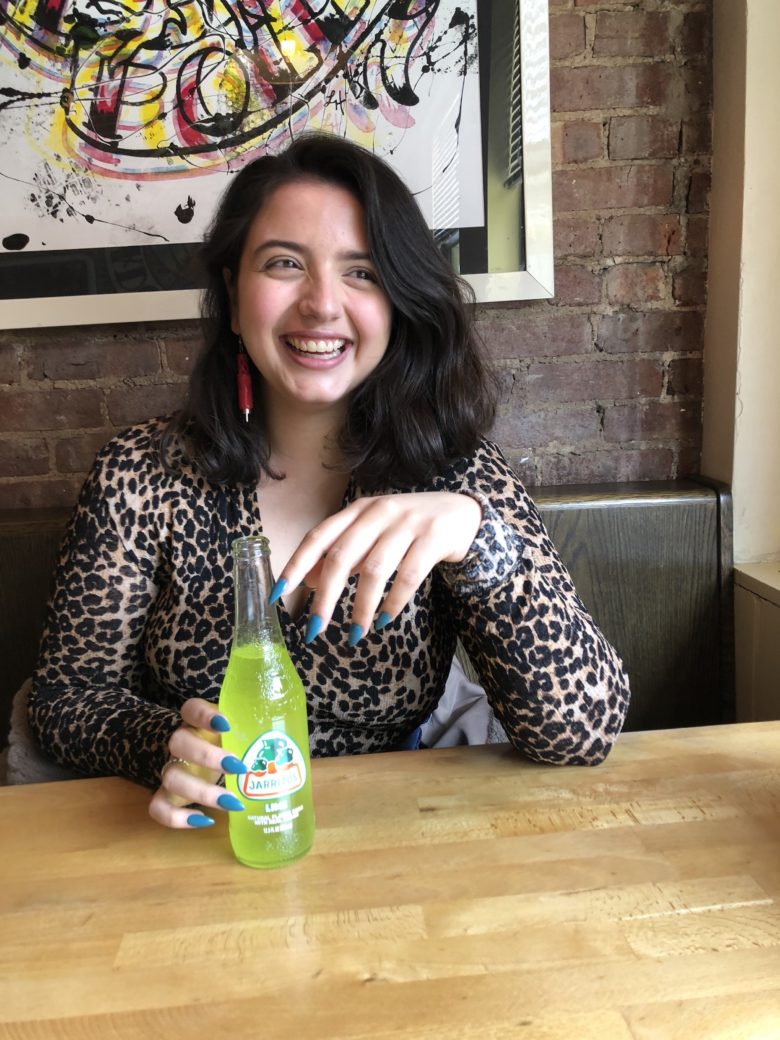
I use a combination of photography, performance and sculpture to create experience-based installations. My work attempts a self examination through the critical study of my own family. I aim to answer questions about my identity and values by researching specific aspects of my familial history and cultural heritages. The ability that comes with being biracial allows me to cross between cultural identities. “How will I ever be Mexican enough having been raised by a white lady?” Or “what does it mean that my ancestors were massacred by the same people that make America’s favorite soup?”
Currently, I am exploring the Americanization of Mexican culture and the way that my identity as a Mexican-American has been filtered through the lens of a single, white mother. I explore the way mass production of “authentic” Mexican cuisine has aided my mother in connecting me with a culture that I would otherwise have only a biological claim to. I aim to investigate how commodified Mexicanidad has shaped and reinforced my ideas of what it means to be an American of Mexican descent.
My work feels almost automatic; its construction derives from a need to express or release internal fears and anxieties. I often describe it as confessional, as when I make work it is vulnerable, personal, and intimate. Recently, I have become very interested in the experiential, primarily in the relationship that can be created between the bodily experience of the viewer and the bodily characteristics of the work, and how the two can connect and emphasize each other. I try to evoke a bodily interaction between the viewer and the work even in my recent drawings and paintings, which reference the body either in scale, material, or presentation. My installation work is frequently reliant upon spaces which are hidden, yet readily accessible—sites which may be seen by anyone, but will only be seen by those who look. I like to create a bodily response through the physical experience of walking towards or looking through something in order to find, uncover, or extract meaning. Though the work is personal, the secrets of it are rarely explicitly revealed; I am hesitant to give it all away, so there is a certain tension between my need for release and expression, and my hesitance to allow for full vulnerability. The bodily experience of needing to approach, peer into, or uncover the meaning of the work in some way reflects this tension, and itself evokes a sense of an internal/external relationship, which creates its own significance as the viewer becomes the participant.
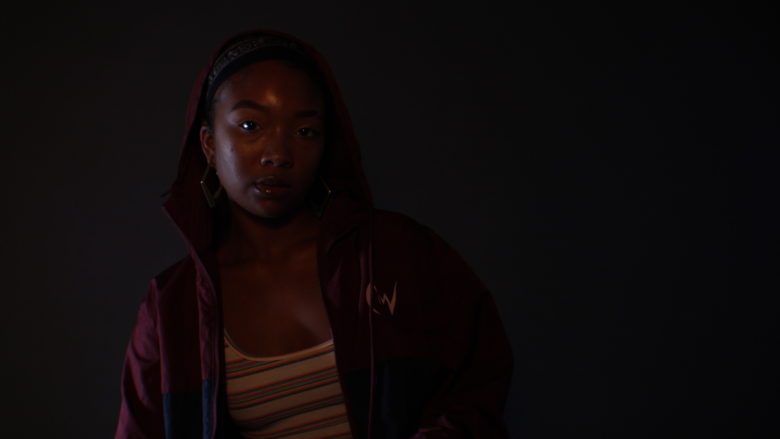
I am born and raised in Chicago. From a young age I've been heavily interested in the arts and making commentary on my surroundings. As an interdisciplinary artist, my work comes in a variety of media that helps me conceptually solve visual and philosophical problems surrounding the Divine Paradox. I am someone that values experience and truth. As a person who has been through many difficult times, using experiences as a catalyst for social change is something that I admire and try to strive for. I am interested in the intersection between art and science and how defining reality ( or not) comes into the play of it all. A lot of my work deals with quantum physics in that aspect, as well as afro-pessimism in hopes to combine my research into one book or paper that acts as a philosophical meditation on the latter. In this process, my practice produces epistemological artifacts documenting this journey.
Samantha Gee is a Chicago-based artist. Her work explores storytelling across mediums— from theater sets and large-scale puppetry, stop-motion and poetry, to paintings and miniature sculpture. Samantha's work finds magic in the everyday, and brings it to the viewer (or reader or audience member). Her artwork has been shown at North Park University (NPU), Ice House Gallery, and the Chicago Rogers Park Branch Library. She done scenic design for many sets with Thin Ice Ensemble Theater, as well as worked on prop, puppet, and scenic designs at North Park University. Samantha received her BA in Fine Arts (with a minor in Theatre Design) from NPU in 2019.
My artwork has allowed me to explore the feelings of disconnect of one’s physical identity from one’s battling inner self. It has enabled me to expand on the actuality of an identity, it’s physical versus internal form and the meaning it is assigned. My exploration of form has led me to interpret the body beyond its physicality, therefore, challenging my own shifting feelings of self and belonging while being simultaneously present.
The ambiguity of identity has led me to question the intimacy of being and becoming within our bodies and what we choose to reveal and conceal. Using abstraction of form as a tool, my work suggests a sense of familiarity to the body but imposes a formal disconnect. I imply meaning to form by assigning order through repetition, symbolism, and extraction.
In order to challenge the viewers assumptions of meaning in a form—regarding its identity, sexuality and physicality, I compare the body to other physical forms, symbols and objects. This has allowed me to further explore my own identity as an individual who is physically female but identifies as gender non-conforming and bisexual.
My work resides at a threshold—the merging point of interiority and superficiality, intimate and grotesque. By relating the crudeness of the physical body to the delicacy of internal self, I explore the meaning of identity through form.
I'm a graphic designer from Chicago, who's interested in intersectionality. Specifically, I'm interested in how people manifest their unique narratives. I recently graduated from DePaul University with a major in Graphic Design, and minor in ISM. Ultimately interested in designing with a purpose.
Meet Guest Speakers
An undisciplined creator. Amina Ross creates boundary-crossing works that embrace embodiment, imaging technologies, intimacy and collectivity in physical and digital spaces. Amina has exhibited work, spoken on panels and taught workshops at venues throughout the United States. Amina's intention within a media-centering practice is to engage sensuality and sense-perception as modes of reclaiming the body. Amina is currently a 2018-2019 Artist-in-Residence at Arts & Public Life and the Center for the Study of Race, Politics, and Culture at the University of Chicago. As an educator Amina is currently an adjunct lecturer in the Contemporary Practices department at the School of the Art Institute of Chicago and Co-lead artist of Teen Creative Agency at the Museum of Contemporary Art. As a curator and cultural organizer Amina is curator of ECLIPSING, a multi-media festival celebrating darkness.
Brandon Alvendia is a Chicago-based artist, independent curator, and educator. His interdisciplinary practice engages spatial and social architectures by creating platforms for experimentation, discussion and collaboration. He is the founder of multiple Chicago alternative spaces artLedge (2004-2007 w/ Caleb Lyons), BEN RUSSELL (2009-2011 w/Ben Russell), The Storefront (2010-2014), and art-publishing house Silver Galleon Press (2008-present). Brandon attended The School of the Art Institute of Chicago (BFA ‘03) and the University of Illinois at Chicago (MFA ‘07).
Dana Bassett has been described as a writer, producer, problem solver, logistical coordinator, fundraiser, shapeshifter, talker, listener and a sensitive, yet demanding, soul. Born in Miami Florida the same year Michael Jackson’s Bad was released, Dana currently lives in a converted former funeral home in the Pilsen neighborhood of Chicago. She has worked with up-and-coming organizations such as The Artists’ Cooperative Residency and Exhibitions Project (ACRE), Borscht Film Festival, and Bad at Sports. Her writing has been published in outlets such as Hyperallergic, The Miami Rail and The Seen. Dana formerly served as the Development Director for ACRE (Artists’ Cooperative Residency and Exhibitions), a volunteer-run nonprofit based in Chicago devoted to employing various systems of support for emerging artists.
Emily Winter is an artist based in Chicago. She is co-founder and director of The Weaving Mill, an experimental weaving studio in Humboldt Park that blends design, fine art, textile education, and research-based practice. Emily received her MFA in textiles from Rhode Island School of Design and a BA in history from University of Chicago.
Erica Mott is a choreographer, sculptural object designer and cultural organizer who, utilizes body based sculptural forms (mask/costume/object), transforms discarded materials and disregarded spaces. Using the tools of humor and surprise, she captures and heightens the magic and mystery of the mundane and invites communities to re-view and re-envision shared spaces and practices.She has been called “ingenious” by the Chicago Reader’s Laura Molzahn, and “a vibrant performance-maker, installationist and choreographer engaged with distinctive creative research and methodology, effectively complimented by articulate and generous teaching skills, mentoring, community and audience building, and public discussion about her work” by CJ Mitchell, Deputy Director, Live Arts Development Agency, UK
Erica’s recent site-specific performances were featured at Free Fall Festival (Toronto), Ingenuity Fest (Cleveland), NES (Iceland), Museo del Ferrocarril (Mexico), CAD Special Exhibitions Space/Artopolis. Erica has collaborated nationally with Tim Miller, Eighth Blackbird, Sharon Bridgforth, Coman Poon/re[public] in/decency, and Guillermo Gomez-Pena. She works with Gomez-Pena’s collective, La Pocha Nostra, as a core troupe member.
She instructs workshops for Lookingglass Theater, Northeastern Illinois University’s Teacher’s Center, The Second City, and several independent venues and organizations. Additionally, she has designed and facilitated lectures for The School of the Art Institute of Chicago, Amnesty International, The Memphis Theological Seminary, University of Michigan Ann Arbor, and the Universities of Witwatersrand and Kwazulu-Natal in South Africa. She has a masters degree in Psychophysical Theatre Practice with an emphasis on intercultural performance and Asian Martial Arts practice from the University of Exeter in the UK. For six years Erica has served as the Director of Education and Community Programming at Links Hall, Chicago.
Erica is a recipient of several awards including Amnesty International’s Patrick Stewart Human Rights Fellowship (to teach arts in community in South Africa), The Santa Fe Art Institute Residency, Ragdale Foundation Residency, NES Artist, the Chicago Dancemakers Forum Fellowship, the City of Chicago CAAP program and the Neighborhood Arts Program (NAP).
J. Gibran Villalobos is an administrator, curator, and art historian who is an alum of CAC’s HATCH residency. In 2016 he was elected to attend the Advocacy Leadership Institute where he was invited to the White House Office of Public Engagement, the National Endowment for the Arts, and the Congressional Hispanic Caucus to speak to key issues affecting Latinos in Chicago. He served as the 2017 resident curator at the Chicago Cultural Center where he launched an inaugural summit of Latino artists and administrators across the United States. For this project, he received the Act Up Awards from the Chicago Community Trust, and a Propeller Grant. He has held the posts of Cultural Liaison for the Chicago Park District in the department of Culture, Arts, and Nature, and Public Programs and Partnerships Manager for the Chicago Architecture Biennial. He currently serves on the Auxiliary Board for the National Museum of Mexican Art and on the Board of Directors for the Chicago Artists Coalition. In 2019 he was recipient of the “Leaders of Color Fellow” by Americans for the Arts and was also named by the Field Foundation as recipient of the “Leaders for a New Chicago” award. He is currently serving as the co-Chair to the National Association of Latino Arts and Culture nationwide summit for 2020 in which more than 200 Latino artists and administrators will meet and gather in Chicago. He is faculty lecturer at the School of the Art Institute of Chicago in the Department of Arts Administration & Policy and currently works as Assistant Curator in Performance and Public Programs at the Museum of Contemporary Art Chicago.
(updated 2025)
Kate Sierzputowski is a freelance writer and arts organizer based in Chicago. Fascinated by artists’ studio processes, she founded the website INSIDE\WITHIN in 2013 to physically explore and archive the creative spaces of Chicago's emerging and established artists. Kate regularly contributes art writing to Hyperallergic, Colossal, the Chicago Reader, and Chicago Magazine. She serves as half of the curatorial duo Episode with Tusk-founder Mary Eleanor Wallace, runs a small gallery on her ear called Chandelier, and has been a co-director of the artist-run gallery space Julius Caesar since 2015.
Kristin Abhalter Smith is the creative director and founder of Roman Susan Art Foundation, a project incubator and platform for Midwestern artists. Since 2012 the space has worked with over 900 artists in the Chicago neighborhood of Rogers Park. Kristin has recently exhibited inflatable sculptures, garments, flags, and paintings at Flatland, Ignition Projects, OPEN Gallery, and STNDRD, and received a DCASE grant for her exhibit at DEMO Projects in Springfield, IL. Kristin received her MFA in Technical Theatre and Design from the University of Minnesota, and has twenty years experience designing, building, and painting for stage and motion picture.
Matt Austin is a book designer and publisher based in Chicago. He started and co-runs Candor Arts, a small art book press that publishes books about life, learning, and healing.
Paul Catanese is a hybrid media artist who creates installations, performance, video, sound, projection, and print media; he has exhibited at the Whitney Museum, Chicago Cultural Center, New Museum, SFMOMA Artist’s Gallery, La Villette, China Academy of Art, Frankston Art Center, Bangkok Experimental Film Festival, Stuttgart Filmwinter, Festival Internacional De Linguagem Electronica, New Forms Festival, Ann Arbor Film Festival, and the International Symposium on Electronic Art. In 2014, he was awarded an Efroymson Contemporary Arts Fellowship, and named the Christian A. Johnson Endeavor Foundation Artist-in-Residence at Colgate University in 2019. Collections include the Robert and Elaine Stein Galleries at Wright State University, the Center for Art + Environment Archives at the Nevada Museum of Art, and the Whitney Museum. Catanese served as President of the New Media Caucus from 2009-14, and is currently Director of Graduate Study for Art and Art History and Professor at Columbia College Chicago.
Sarah Lombardi has been in the accounting and finance field for over 15 years and holds a Master of Science degree in Accounting. She has touched over 100 organization's financials in some capacity over that time frame. As you can imagine, she has been involved in almost any financial scenario you can think of and has loved every minute of it. About 2 years into her career, she found yoga and became a certified yoga instructor. This fueled her passion around health and wellness and helping others lead a healthier lifestyle. One commonality she discovered to hold true is that money stresses people out and stress causes people to be unhappy and unhealthy. Through the tools she has developed in both her professional career and her yoga career, a sweet spot was created for helping businesses and individuals organize their finances in a calming, low stress and profitable manner. Hence the birth of Healthy Financial Solutions!
Stephanie Koch is an arts administrator, curator, and writer. She is the Co-Founder of Annas, a Chicago-based residential studio and exhibition space focused on supporting collaborative projects and exhibiting process. Koch holds a BA in Political Science from the University of Chicago and an MA in Visual and Critical Studies at the School of the Art Institute of Chicago. Prior roles have included collections intern at Museum of Contemporary Photography, senior lab assistant at LATITUDE, and Managing Director at Museum of Vernacular Arts and Knowledge. Currently, she is a Curatorial Fellow with ACRE.
Tempestt Hazel is a curator, writer, artist advocate, and founder of Sixty Inches From Center, a Chicago-based online arts publication and archiving initiative. She is also the Arts Program Officer at the Field Foundation. Over the years she has worked in arts administration, curating, and multidisciplinary programming at Chicago's Department of Cultural Affairs and Special Events (DCASE), Chicago Artists Coalition, Chicago Park District, and Arts + Public Life at the University of Chicago. Her exhibitions and research have been produced with the University of North Texas, South Side Community Art Center, Terrain Exhibitions, Contemporary Arts Council, Black Metropolis Research Consortium, and University of Chicago. Her writing has been published by Hyde Park Art Center the Broad Museum (Lansing), in Support Networks: Chicago Social Practice History Series, Contact Sheet: Light Work Annual, Unfurling: Explorations In Art, Activism and Archiving, on Artslant, as well as various monographs of artists, including Cecil McDonald, Jr.’s In the Company of Black published by Candor Arts. You can also read her writing in the recently released Art AIDS America catalog for Chicago and in the online journal Exhibitions on the Cusp by Tremaine Foundation. Photo: Darryl DeAngelo Terrell
William Estrada grew up in California, Mexico, and Chicago. His teaching and art making practice focus on addressing inequity, migration, historical passivity and cultural recognition in under represented communities. He documents and engages experiences in public spaces to transform, question, and make connections to established and organic systems through discussion, creation, and amplification of stories through creativity already present. He is currently a visual art teacher at Telpochcalli Elementary and faculty at the School of Art and Art History at UIC. He has worked as an educator and artist with Chicago Arts Partnership in Education, Hyde Park Art Center, SkyArt, Marwen Foundation, Urban Gateways, DePaul University’s College Connect Program, Graffiti Institute, Vermont College of Art and Design, Prison + Neighborhood Art Project and The School of The Art Institute of Chicago.
William’s art and teaching is a collaborative discourse of existing images, text, and politics that appoints the audience to critically re-examine public and private spaces. As a teacher, artist, and cultural worker he reports, records, reveals, and amplifies experiences you find in academic books, school halls, teacher lounges, kitchen tables, barrios, college campuses, and in the conversations of close friends to engage in radical imagination.
William has presented in various panels regarding community programming, arts integration, and social justice curricula through the Illinois Art Education Association, the School of the Art Institute of Chicago, Illinois Humanities Council, Smart Museum of Art, the National Guild of Schools in the Arts, National Art Education Association, Teachers for Social Justice San Francisco, Iowa University, Grand View University, Illinois State University, University of Nebraska at Kearney, Nebraska Art Teachers Association, Illinois Arts Alliance, and the Chicago Cultural Alliance. In 2016 he was awarded the Teaching Artist Community Award from 3Arts Chicago.
His current research is focused on developing community based and culturally relevant projects that center power structures of race, economy, and cultural access in contested spaces.

